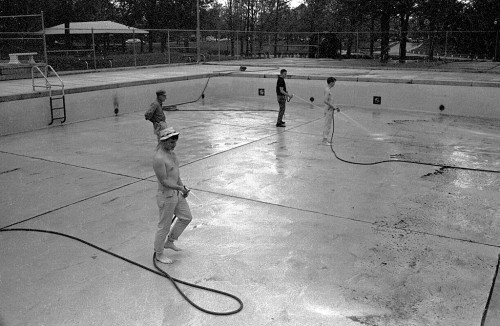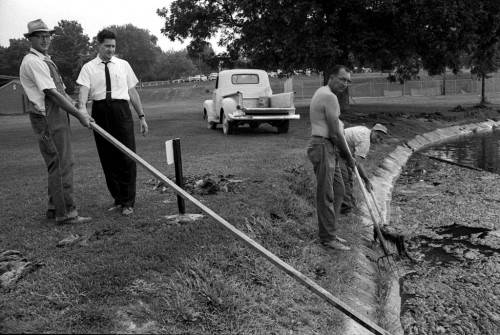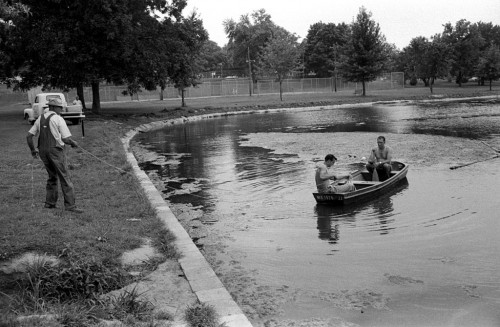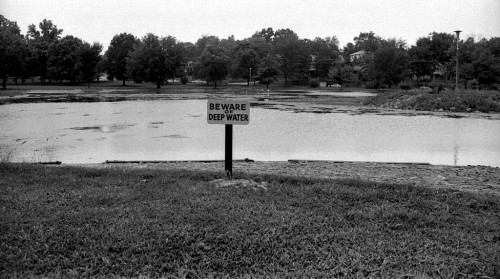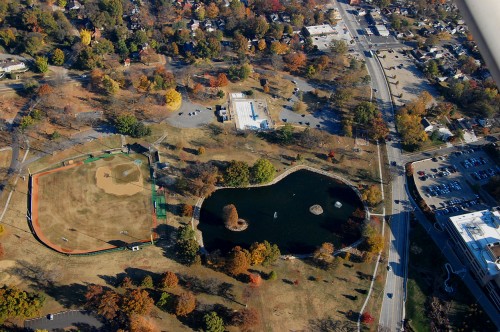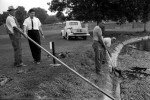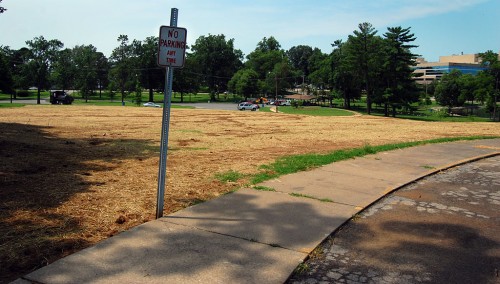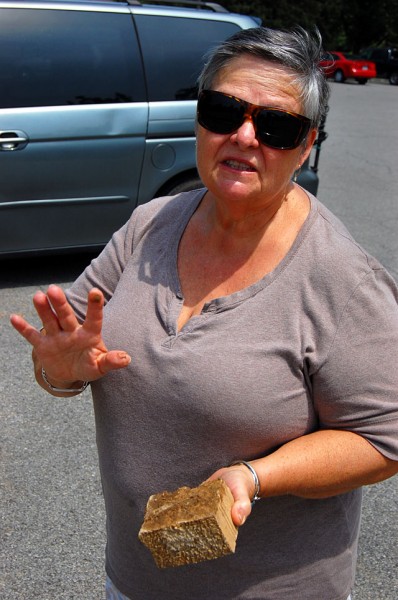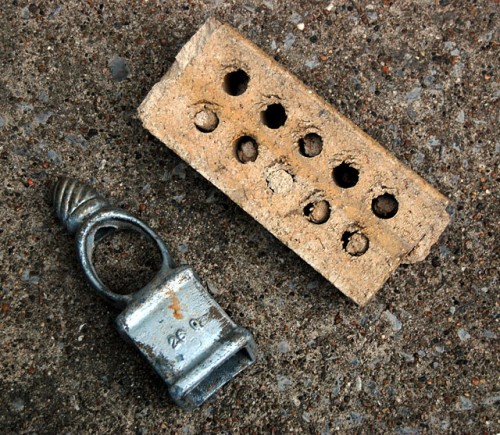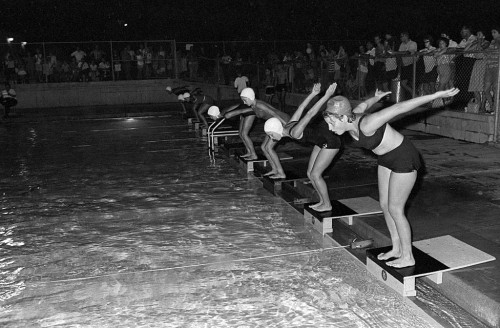 This is a swim meet at Capaha Park Pool on July 31, 1964, if we believe the note on the negative sleeve. There are big holes in Google’s Missourian archives for the last part of 1964, so I don’t know if a story ran in the paper. Some of the pictures are pretty marginal, but there are a bunch of Capaha Pool fans our there who will overlook the technical shortcomings. Click on any photo to make it larger.
This is a swim meet at Capaha Park Pool on July 31, 1964, if we believe the note on the negative sleeve. There are big holes in Google’s Missourian archives for the last part of 1964, so I don’t know if a story ran in the paper. Some of the pictures are pretty marginal, but there are a bunch of Capaha Pool fans our there who will overlook the technical shortcomings. Click on any photo to make it larger.
I almost got electrocuted
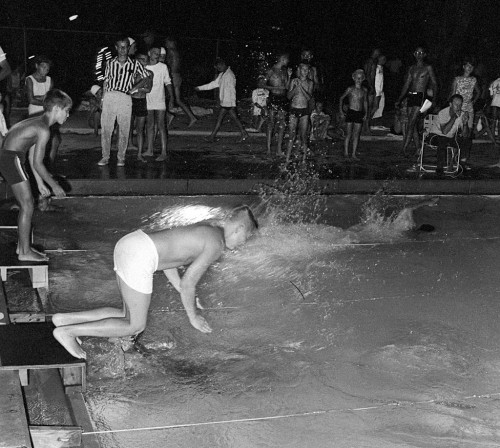 All I remember about this swim meet was that I almost got electrocuted. My electronic flash – strobe – was sick, so I borrowed one from somebody so I could cover the meet.
All I remember about this swim meet was that I almost got electrocuted. My electronic flash – strobe – was sick, so I borrowed one from somebody so I could cover the meet.
In case you didn’t know, strobes work by sucking an electrical charge out of low voltage batteries and storing it in a capacitor until it’s boosted to hundreds of volts. When you press the shutter release, that closes a contact that sends all that voltage across the flash tube, producing a very short duration powerful blast of light. Later models operated off a 510-volt battery, but that’s another, equally painful story.
Keep the plug covered
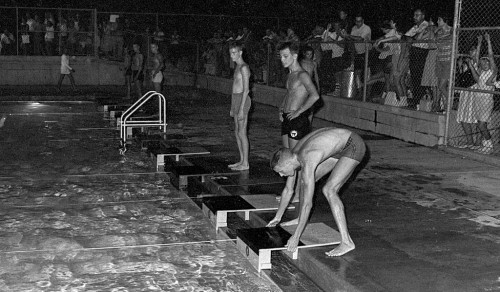 The batteries would drain fairly quickly, so some of the strobes had ports where you could plug the unit into a regular electrical outlet. Well, what can go in, can also come out, so you’re supposed to keep the contacts covered with a plug when you’re not using it with AC power. The guy who loaned it to me either wanted to see me dead or he didn’t have the plug. I never did find out.
The batteries would drain fairly quickly, so some of the strobes had ports where you could plug the unit into a regular electrical outlet. Well, what can go in, can also come out, so you’re supposed to keep the contacts covered with a plug when you’re not using it with AC power. The guy who loaned it to me either wanted to see me dead or he didn’t have the plug. I never did find out.
Photographer lights up
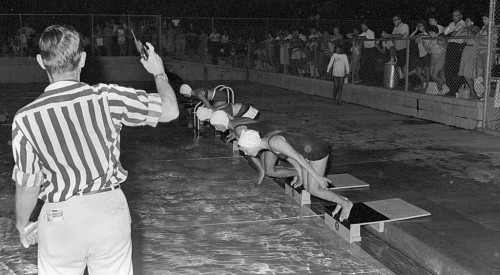 So, anyway, I’m walking across the wet pool deck when my finger accidentally touches those exposed contacts. The strobe says, “This guy must want to take a picture, so I’m going to dump my XXX volts and make a bright flash.” Instead of going through the flash tube, all those electrons took the path of least resistance – my body – to get to the wet pool deck. I thought somebody had tackled me from behind. I looked all around, though, and there was nobody close to me.
So, anyway, I’m walking across the wet pool deck when my finger accidentally touches those exposed contacts. The strobe says, “This guy must want to take a picture, so I’m going to dump my XXX volts and make a bright flash.” Instead of going through the flash tube, all those electrons took the path of least resistance – my body – to get to the wet pool deck. I thought somebody had tackled me from behind. I looked all around, though, and there was nobody close to me.
Flash was brighter than the photographer
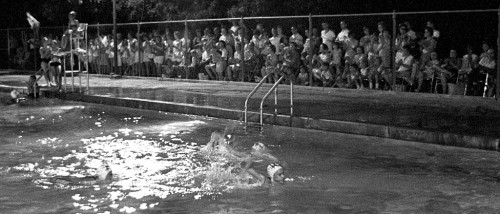 I went on to cover the meet and POW!!! the same thing happened. This time I realized what was going on and made sure to keep my fingers away from the light-the-photographer-up contacts.
I went on to cover the meet and POW!!! the same thing happened. This time I realized what was going on and made sure to keep my fingers away from the light-the-photographer-up contacts.
Remember braiding lanyards?
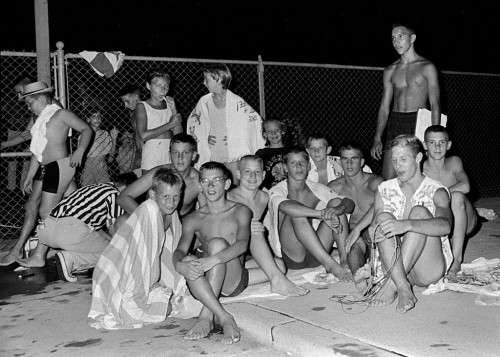 I think the kid on the far right is braiding a plastic lanyard. That was all the rage when I was in grade school. Square braiding was easy; round braid was a little harder. I can’t remember all the ways we used them. I think the challenge was in the braiding. Actual utility was secondary.
I think the kid on the far right is braiding a plastic lanyard. That was all the rage when I was in grade school. Square braiding was easy; round braid was a little harder. I can’t remember all the ways we used them. I think the challenge was in the braiding. Actual utility was secondary.
Wife Lila pointed out that these were taken before the lanes were painted on the pool bottom. Here’s what the pool looked like when they were getting ready for the season. It contains links to most of the other Capaha Park Pool stories we’ve done.

